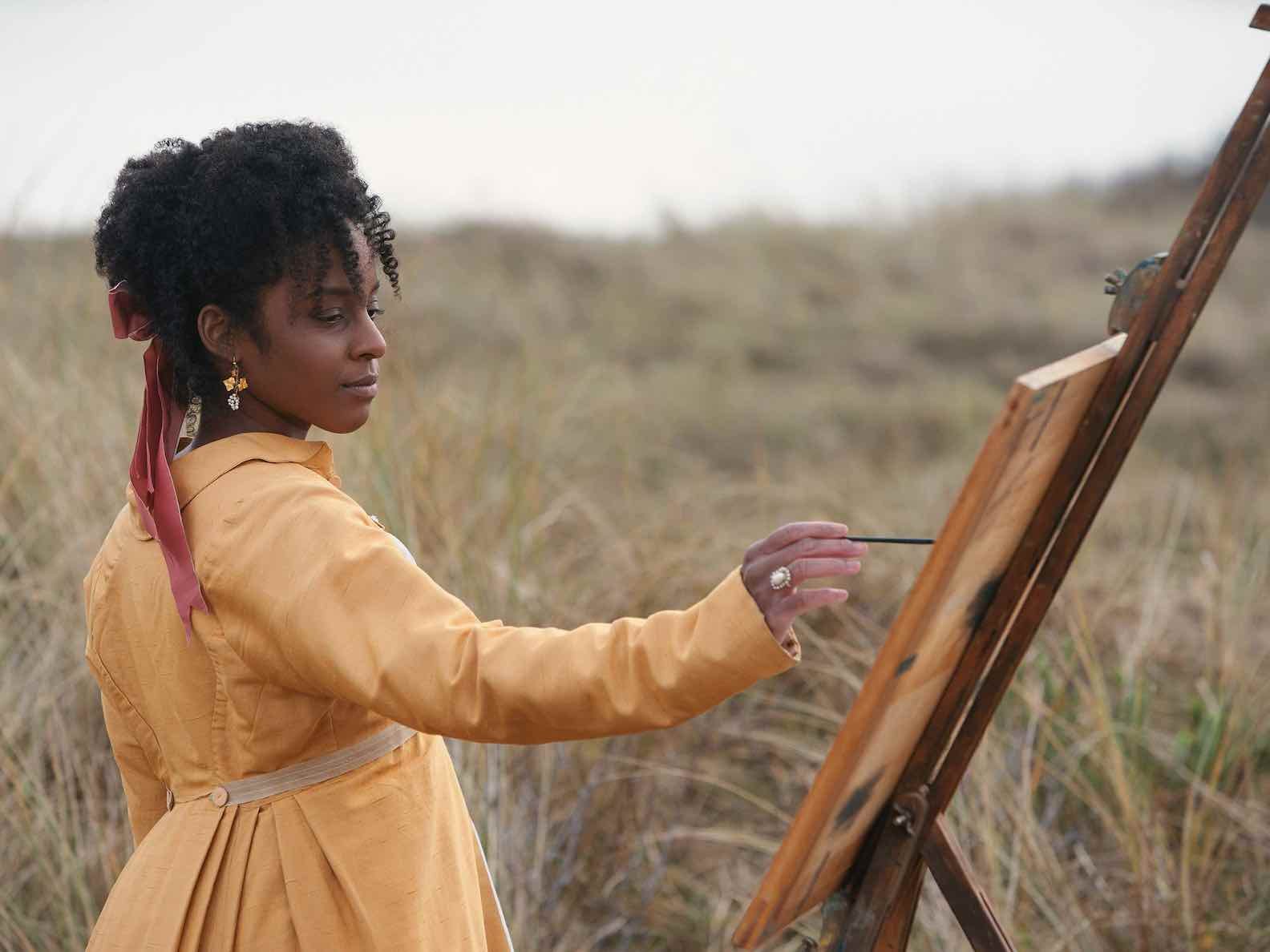“TELEVISION SERIES OFTEN HAVE TO REINVENT THEMSELVES, SOMETIMES FOR REASONS BEYOND THEIR CONTROL.”
Natalie Jenner, internationally bestselling author of The Jane Austen Society and Bloomsbury Girls, discusses the widespread success of PBS's Sanditon.
The new television production of Jane Austen’s Sanditon is that rarest of achievements: an adaptation of something that barely exists.
Jane Austen started writing the novel in 1817 and stopped at chapter twelve due to ill-health. She would tragically die aged only forty-one just a few months later. Janeites the world over rejoiced when ITV announced the first-ever, eight-part television adaptation which aired in 2019, a simpler, pre-pandemic time.
Within twenty minutes of the first episode, head writer Andrew Davies had swiftly dispensed with the little that Austen had left us. Things were off to a shaky start. There were missed opportunities (Charlotte’s telescope from her brother Freddy, for one, would have made a very neat visual) and Sidney Parker’s dismissive behaviour towards our heroine often felt unmoored from the text and uncalled for. What world were we now in, I asked myself, as incestuous step-siblings took the stage—a virtual Henry and Mary Crawford on steroids—and sent an amoral chill through the somewhat darkly-filmed seaside town, which ends up covered in ashes by that season’s end.
A few years then passed between the first and second seasons due to cancellation and the wonderful outcry by fans that revived the series. Season two shows the influence of such hits in the meantime like the Autumn de Wilde adaption of Emma and the Regency craze ignited by Bridgerton. Viewers would now not only bask in handsome men (how often does a show exceed its quota for potential heartthrobs? Devoted aspiring architect Stringer anyone? Cuddly Lord Babington? Charismatic painter Charles Lockhart?) but in pastel-painted shops, decorative gazebos, and towering tea trays as well. Season two also exceeded its Austen origins by throwing in a bit of Jane Eyre-inspired storytelling with Alexander Colbourne and his two wards, a surprisingly rich addition to the series.
Colbourne and Heywood
Ironically, once the series fully left the legacy of Austen behind, it came into its own while still managing to honour what we love about Austen’s novels. As someone once famously coined, Jane Austen loves her bad boys, and one of the most ironic and delightful aspects of season two is how the character of Charles Lockhart, charismatically portrayed by Alexander Vlahos, clearly got away on his creators. As a writer, I have had that happen, too, and it’s bittersweet: after all, what’s done is done when it comes to a shooting script. Even so, this viewer headed into season three praying for a redemption arc for Lockhart, only to be confronted with Edward Denham pulling a “Henry Crawford” instead. I am only halfway through the third season as I write this and you know the writers and actors are doing a superlative job, when you no longer know what you want.
Radical for its time, Austen’s inclusion of a character of mixed race in her unfinished manuscript was realized by its television creators for the important opportunity it remains. One of the great joys of the series is watching Georgiana Lambe bloom and parry as she valiantly confronts a racist society in which she is simultaneously the richest woman in town, constantly judged, and never truly seen. Season two introduced important historical events such as the sugar boycott in support of complete abolition. By season three, this former lawyer was entranced with courtroom shenanigans, which hinged on the very real notion of identity and whether one’s ancestral past could cross jurisdictions.
Georgiana Lambe
Television series often have to reinvent themselves, sometimes for reasons beyond their control. In understandably banking on a second season, the first season left us with an ending not only violently un-Austenesque but rare for any popular movie or tv show, and which ironically precipitated the outcry upon cancellation and the resulting renewal. What I love about the storytelling with seasons two and three of Sanditon is the crystal ball its makers were given in being able to film both series consecutively, allowing them to plan out a whole new novel of sorts whose arc splits like the atom in the middle of it all. The last half hour of the season two finale hit so many beats my head is still spinning. This is probably why it took me a while to sink into the softer, more contemplative cadence of the third season.
Finally, there are two areas in which Sanditon on television truly shines: the care it gives to the art of filming and visual composition and our heroine Charlotte. Who can forget the overview of Leo’s hat dominating the screen as she enters the army camp in search of her real father, Georgiana walking away from the terrible news of Lockhart contesting her inheritance with Charlotte so closely by her side, or the two women sitting with the wonderful Mary Parker as they stare in shock at the courtroom antics before them? These images all attest to the focus on women that is subtly but effectively being conveyed throughout the series.
Left to right, Alison Heywood, Charlotte Heywood, and Georgiana Lambe
Most effective of all is our young female protagonist, Charlotte Heywood, flawlessly played by Rose Williams. I feel terror every time Charlotte is filmed alone on the seaside cliff and not because she might tumble over, but which potentially undeserving man is going to break her heart now? When she cried “Enough!” to herself at the end of season two, we all cried with her. As a fulsome and uniquely developed character, Charlotte possesses the emotional restraint of Elinor Dashwood, the patience of Fanny Price, the vitality of Elizabeth Bennet, the youthful innocence of Catherine Morland, and the resilience of Anne Elliot. I can’t yet spot any Emma in her, but I suspect that is because only Emma can be an Emma. In this way, she literally and figuratively unites all the qualities that we love in Austen’s heroines.
Sanditon on television is that rarest of achievements. Betrayed by the constraints of its medium, it found a way to surpass them while staying true to the essence of its first and foremost creator. Austen wants us to support each other like Arthur Parker does with Georgiana, to be true to ourselves like Charlotte in the face of heartbreak, to balance commercialism with community like Mary Parker. On television, Sanditon may give us a different world from Austen but wonderfully proves what she knew in her consummate genius: people never change.
© Natalie Jenner, Jane Austen Literacy Foundation Ambassador and author of the instant international bestseller The Jane Austen Society and Bloomsbury Girls, and forthcoming Every Time We Say Goodbye (2024)
It’s not too late to enter our short story writing competition!
Entries close at midnight GST on Monday 1st May. Fiction, 1000 - 2000 words, inspired by the theme The Wonder of Words. Click below for details and entry guidelines. Free to enter.
Join us at Jane Austen Regency Week 2023
Join Caroline and her family, Foundation ambassadors and volunteers in Chawton for a Parade for Literacy and Jane Austen Regency Picnic in the grounds of Chawton House on Sunday 18th June.








